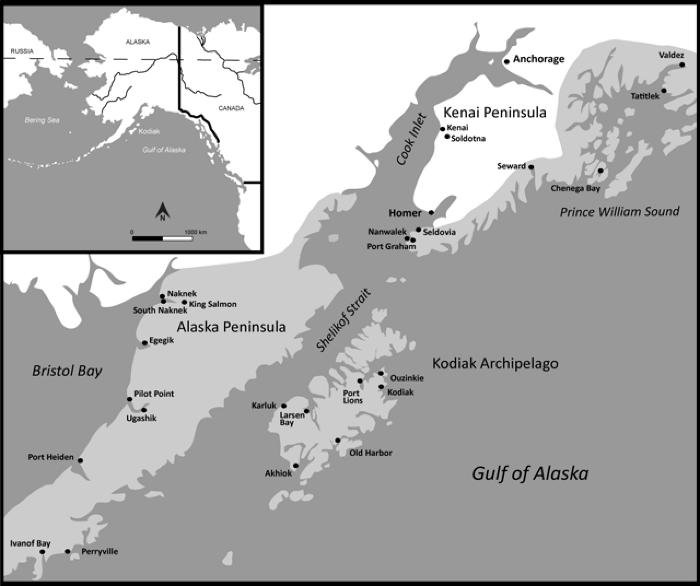Kenai Peninsula Person — Kenaayuq, Kangiyarmiu’aq, Kangiyarmiuq

Although it is separated from the Kodiak Archipelago by miles of open ocean, the Kenai Peninsula shares many features with the Kodiak region. Geologically, the two are formed of the same rocks, squeezed and folded into a continuous set of mountains. The Kodiak Mountains are the westernmost extension of the Kenai-Chugach Mountains, the steep-sided ridges that form the spine of the Kenai Peninsula and her fjorded southern coast. As on Kodiak, glaciers carved deep narrow valleys out of the Kenai’s bedrock, creating its rugged topography. Glacial ice is also responsible for separating the Kenai from Kodiak. Massive tongues of ice cut channels between the regions, which the sea flooded when the earth’s climate warmed and the glaciers retreated.
The biological and cultural histories of the region are also similar. Although the Kenai has been forested much longer than Kodiak and supports a wider variety of terrestrial mammals, its sea life is quite similar. Salmon, shellfish, sea mammals, and sea birds abound, especially along the southern coast. Archaeological data suggest that Alutiiq ancestors colonized this region, particularly Kachemak Bay, at least six thousand years ago. They were not alone, however. Dena'ina Athabascan societies also thrived on the Kenai, although in more northerly regions. Today there are two Alutiiq villages on the Kenai Peninsula: Nanwalek and Port Graham. Alutiiq people also live in Seldovia, Homer, Kenai, and Soldotna.
